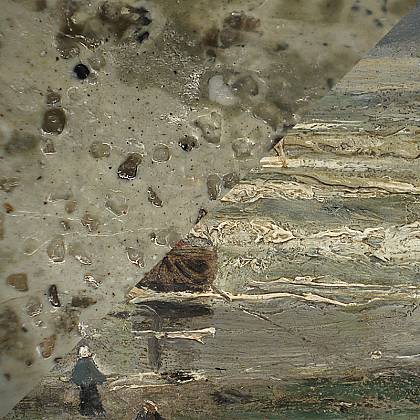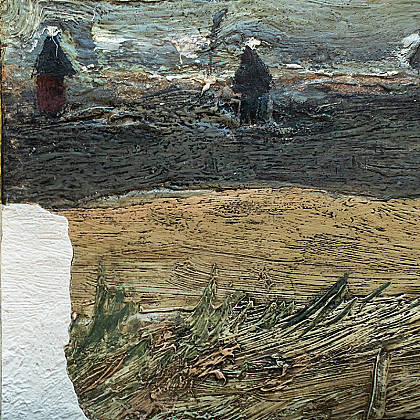Dirt or paint?
View of the Sea at Scheveningen
The conservator examined the painting after it was found and returned to the museum after a theft. It looked like there was a layer of dirt on it, particularly in the grooves of the brushwork. Closer inspection showed that this was a semi-transparent layer of paint, brownish in some places, and greenish or black in others.
It looked like a patina, a weathered layer that makes a painting look old. But it had not been created by ageing. It was applied on purpose, probably not by Van Gogh himself, but during a restoration in the early 20th century.
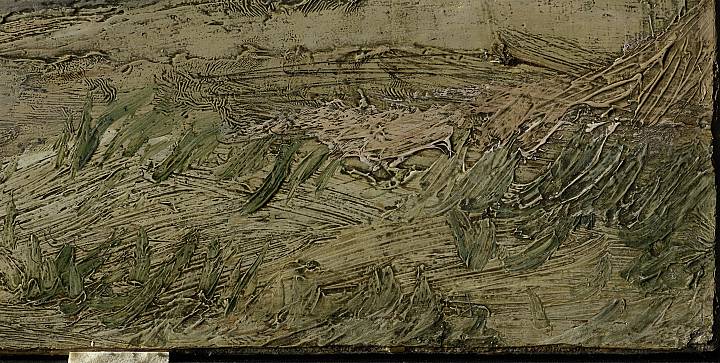
The patina can be seen particularly well in the sand in the foreground. It disturbs our view, creating black stripes in the area with the blades of grass in the foreground, for example. If you try to imagine it is not there, the composition becomes flatter and calmer.
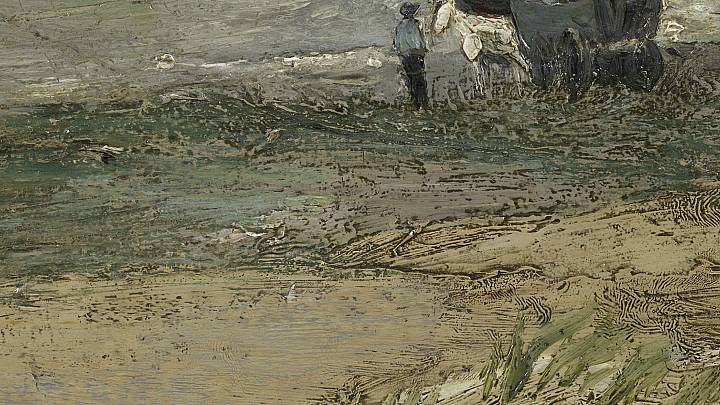
The patina was not removed because this would have affected the original paint.
During previous conservation treatments attempts had been made to make the patina less visible by overpainting it. These overpaints had become discoloured. They also disturbed the largely horizontal pattern of lines in the patina. This made some parts of the painting appear to protrude, disturbing the depth effect.
The conservator recently retouched these old overpaints.
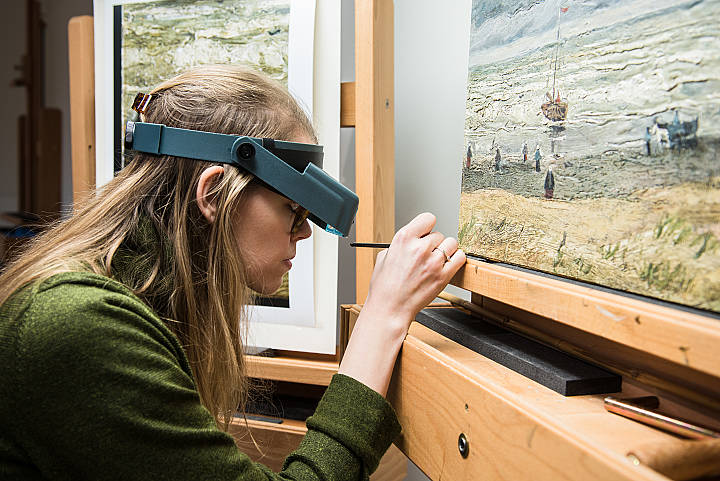
The conservator retouching the painting.
A genuine signature?
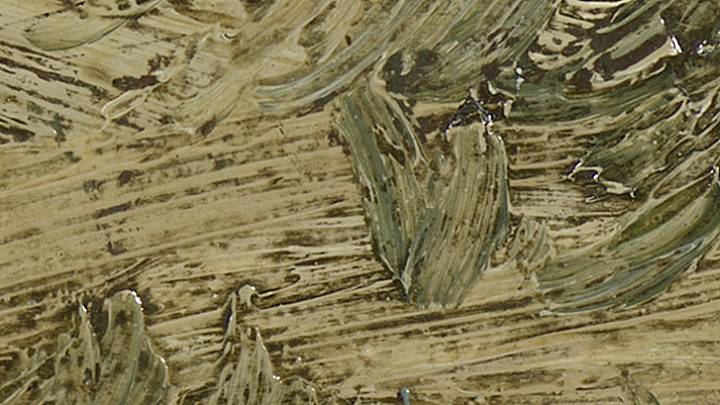
The conservator found a signature (‘Vincent’) on top of the patina. Since it is on top of the patina layer, which is probably not original, we suspect that it was not written by Van Gogh.
Whoever added the signature undoubtedly hoped that it would increase the painting’s value. At the beginning of the 20th century, Van Gogh’s art was becoming more appreciated, and better known among the general public. An original painting signed by Van Gogh would probably sell better.

